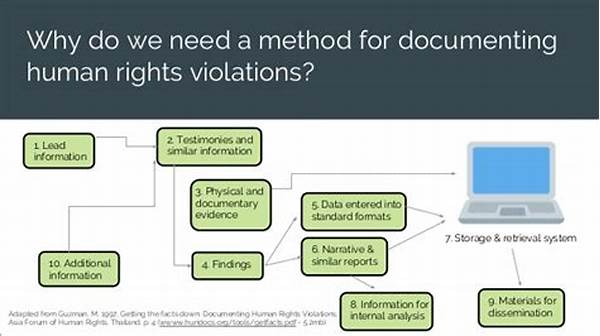What if I told you that history isn’t confined to dusty old books or endless text-heavy documents? Imagine stepping into a time machine that not only takes you to the heart of past events but also lets you hear the voices, see the faces, and feel the emotions of those who fought against injustice. How does that sound for a unique selling point? Enter the world of audio visual history sources documenting human rights struggles worldwide. It’s like having a front-row seat to the real stories of human courage, resilience, and fight for dignity.
Read More : Simple Audio Visual Setup For Small Rooms
The Undeniable Impact of Visual Storytelling
Visual storytelling has an unparalleled ability to engage us in stories that matter. When it comes to portraying human rights struggles, audio visual sources are not just educational but deeply moving, creating emotional connections that text alone can rarely match. You’re not just learning history; you’re experiencing it. From grainy black-and-white footage to crisp digital recordings, these sources turn abstract data into relatable human experiences. Whether you’re an educator, researcher, or just a curious soul, exploring these audio visual treasures can ignite a desire to take action and contribute to the ongoing fight for human rights.
The Power of Audio Visual History
When we talk about “audio visual history sources documenting human rights struggles worldwide,” we’re diving into a rich tapestry of stories told through the lens and microphone. These sources range from documentaries and news footage to personal video diaries and interviews that provide invaluable first-person perspectives.
Documentaries: Unveiling Truths
The documentary genre serves as a profound tool for chronicling human rights struggles. Films like “13th,” “The Act of Killing,” and “The Look of Silence” offer compelling narratives that not only inform but provoke thought and debate. These documentaries go beyond mere storytelling; they are investigative pieces that bring hidden truths to light, serving as both historical records and calls to action.
Personal Video Diaries and Interviews
One of the most potent aspects of audio visual history sources is the personal video diaries and interviews of those affected by human rights abuses. These raw and often unedited recordings provide an unfiltered glimpse into the lives of people who might otherwise remain voiceless. They allow for a more intimate connection to their stories, adding layers of empathy and understanding that text simply cannot replicate.
News Footage and Archives
Archived news footage plays a crucial role in documenting real-time events. News agencies worldwide have contributed to a treasure trove of historical footage that helps us better understand key moments in human rights struggles. This real-time documentation provides context and authenticity, enabling future generations to see what was happening as events unfolded.
Education and Advocacy
The use of audio visual history sources in education and advocacy is revolutionary. Educators use these tools to create engaging lessons that bring history to life, while activists employ them to highlight ongoing struggles and galvanize support for change. By making these sources accessible, we can empower individuals to become informed advocates for justice.
Read More : Audio Visual Solutions For Large Corporate Events
Detailed Insight into Audio Visual History Sources Documenting Human Rights Struggles
To appreciate the scope and importance of audio visual history sources documenting human rights struggles worldwide, consider the following insights and examples:
Examples of Audio Visual History Sources
Summing Up the Importance
In conclusion, audio visual history sources documenting human rights struggles worldwide are indispensable in our quest to understand and address ongoing injustices. They bridge the gap between past and present, providing an immersive experience that books alone cannot offer. These sources challenge us, educate us, and, most importantly, call us to action.
The stories captured through these lenses are not just pieces of history; they are vibrant tapestries of human experiences that continue to shape the world. By embracing these sources, we can keep the memory of past struggles alive, inspire future generations, and ensure that the fight for human rights continues until justice prevails for all.
If there’s one takeaway from exploring these captivating resources, it’s this: Understanding the past is the first step towards making a better future. So let’s dive into these stories, share them widely, and turn the lessons of history into the realities of today.
